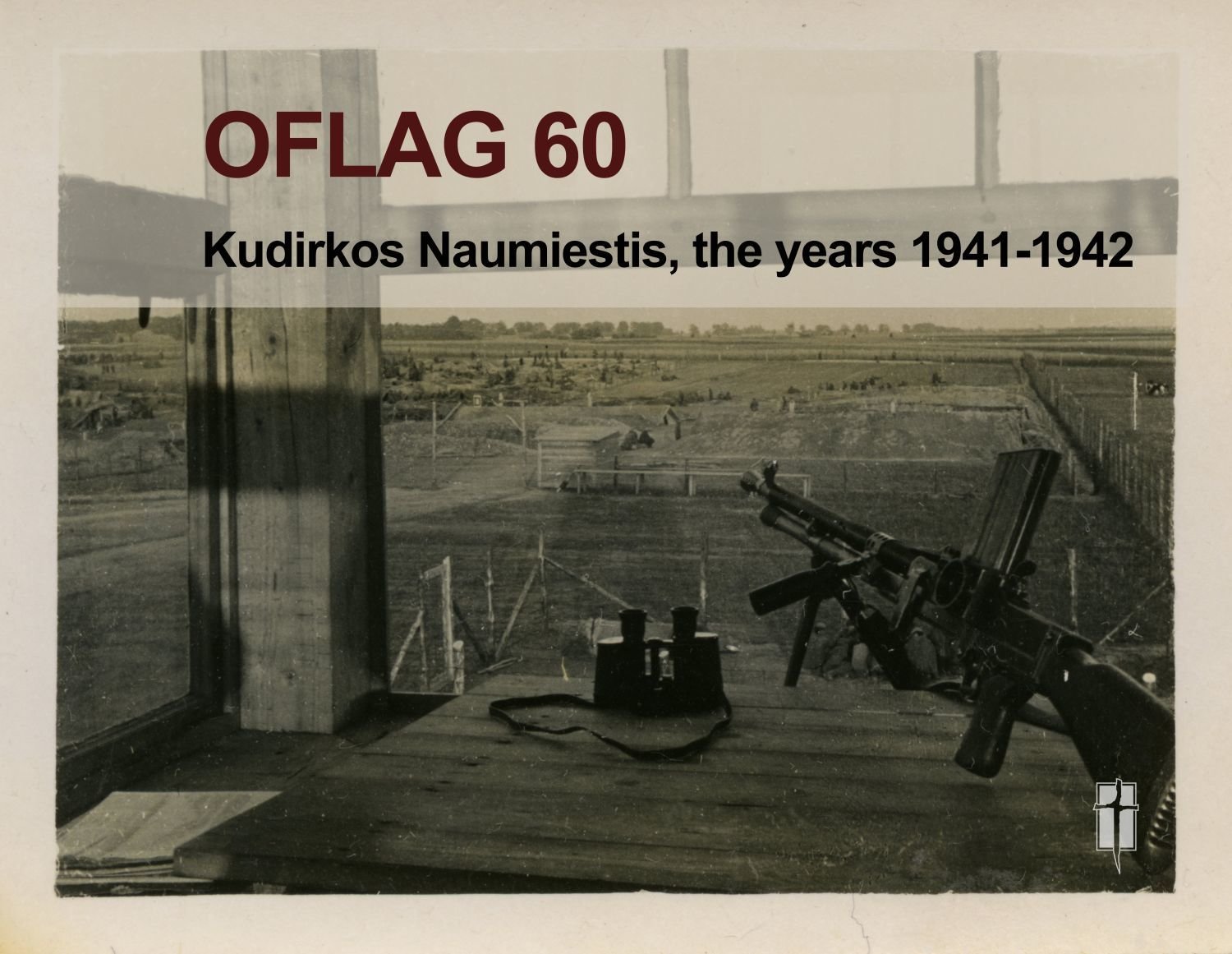
Virtual Exhibition
Press "Right" button to start Exhibition,
Use Arrow buttons for navigation
German Prisoner-Of-War Camps
Prisoner-Of-War Camps of Military District (Wehrkreis) I During World War II, the territory of Germany (with occupied territories later added) was divided into 17 Military Districts (Wehrkreis). Military District I (Wehrkreis I, Königsberg) with the prisoner-of-war camps located on the territory of this District covered East Prussia, while later – a part of occupied Poland and the Royal District of Tilsit-Gumbinnen as well. The higher command of the territory (Wehrkreiskommando I Ostpreussen) was based in Königsberg.
The POWs were under the supervision of the Wehrmacht (unified Armed Forces of Nazi Germany). Institutional responsibilities were distributed between the Armed Forces High Command (Oberkommando der Wehrmacht; OKW) and Germany Army High Command (Oberkommando des Heeres; OKH). Prisoners of war division of the General Wehrmacht Board of the High Wehrmacht Commando (Amtsgruppe Allgemeines Wehrmachtamt; AWA; head – General Hermann Reinecke), was in charge of prisoner of war affairs, while from 1 January 1942, the Chief for Prisoners of War Affairs was responsible for the German Reich, the General Governorate (occupied Poland) and the German civil administration areas in the occupied countries (except for Ukraine and Norway). Chiefs of the POW units in seventeen military districts were also under his command. From 25 September 1944, responsibility for prisoner of war affairs was transferred to Heinrich Himmler, reichsführer SS and Chief of the German Police. H. Himmler appointed SS Obergruppenführer Gottlob Berger to be in charge of prisoner of war affairs.

1941: A column of Soviet POWs. Marijampolė. MGV
In Military Defence District I, at the beginning, Lieutenant General Hubert Gecke (died in 1942) was in charge of prisoner of war affairs, who was succeeded by Colonel General Oscar von Beneckendorff und von Hindenburg, his deputies – Major Ulrich Erdtmann and Rittmeister Perdant. Major Krugenberg had responsibilities of the intendant (Quartiermaster). Captain Doctor Savage was dealing with medicine and sanitary issues. From December of the year 1944, the leadership functions were taken over by Colonel General Wilhelm von Stockenhausen. A person responsible for order and security was SS Commanding General (obergruppenführer) Wilhelm Rediess, who represented special forces – SD (Sicherheitsdienst – Intelligence Agency) and SiPo (Sicherheitspolizei – Security Police).
Vehrmacht camps for POWs were categorized by functionality and subordination. These features were captured in the names of prisoner-of-war camps and designation numbers. Usually, a designation number did not reflect a particular geographical location. Oflags (Offizierslager) were intended just for officers (officers of higher rank than sergeant or starshina). Yet, this was not always observed due to the large number of prisoners of war. Frequently, the officers were kept at the same camps as sergeants and privates. The total number of separate oflags established by Nazi during the war was 99.
The Structure of Prisoner-Of-War Camps. Subordinate to the German Armed Forces, the prisoner-of-war camps were operated under the same typical organizational structure. Each camp had to have its own administration and the following units:
1A – Command unit: responsible for organizing, security, regime and accounting (accounting of prisoners and book keeping).
2A – Work distribution unit: requests were received, contracts concluded and prisoners distributed to forced labour location. Reports were prepared on where and for what work prisoners went.
2B – Prisoners of war registration unit: registration, filing cards of surnames, assigning numbers to camp prisoners.
3A – Abwehr, counterintelligence unit: engaged in recruitment of agents and escape prevention.
3B – Censorship unit: all correspondence underwent checking.
4A – Household unit
4B – Sanitary unit
Germany Attitude Towards the Red Army Prisoners of War. It was thought a priori that Germany, the signatory of The Geneva Convention Relative to the Treatment of Prisoners of War (27 July 1929), would adhere to the principles of the Convention and would follow it. Still, the Geneva postulates used to be applied more or less to servicemen from the USA and Great Britain, while soldiers and officers of Polish, Russian and French origin underwent different treatment. The law applied to servicemen of the Red Army used to be very “specific”. The issue of how Soviet prisoners of war would be treated was discussed even prior to launching the military operations. First of all, political commissars of the Red Army came up in view (politruks). It was thought that they were not the servicemen, just political, ideological civil servants. Therefore, a so called The Commissar Order or Guidelines for Treating of Commissars (Kommissarbefehl) had been prepared. The High Command of the Armed Forces (Oberkommando der Wehrmacht), following Hitler’s directives of 3rd March 1941, on 6 June 1941, issued a directive concerning treatment of political commissars. This directive instructed how to recognize supervisory political officers responsible for the political education – politruks, and how to treat them: separate at once from other prisoners of war and liquidate immediately, killing by firing squad without any trial. Sometime later, a search for communists, Soviet functionaries and, of course, servicemen of Jewish nationality among the prisoners of war was launched.

1941: Soviet prisoners of war. Rietavas. MGV
Following the order of the Commissar, 140 thousand of Soviet prisoners of war were killed. Those who were making attempts to escape, also were transferred to German Security Police to kill by firing squad. The Soviet prisoners of war were deliberately kept under conditions of starvation by Nazi authorities. Food rations were too small for prisoners of war, their health condition was gradually worsening and they died from hunger and diseases. Even those who were working got too small rations of food (according to the instructions adopted in August of 1941 by the Chief Land Forces Command, only 2200 calories per day). The quality of food was extremely bad. Criminal policy of Nazi German towards Soviet prisoners of war caused deaths of 2 million prisoners by the end of the year 1941, while by the end of the war – more than 3.3 million of prisoners of war died.
The Attitude of the USSR Authorities Towards Prisoners of War (POWs). Soviet authorities were merciless in respect of troops of the Red Army, prisoners of war, as well. Order No. 270 of 16 August 1941 of the headquarters of the Red Army contains a text urging to fight the enemy in every possible way and to the end, while those who were going to disobey had to be shot to death on the spot.
All soldiers and officers of the Red Army, who fell into German captivity or were present on the territory occupied by Germans even for a short time, used to be considered traitors to the homeland. Quite frequently, such persons used to be sentenced in absentia, during the time of their imprisonment at the prisoner-of-war-camps. Operative data on alleged anti-Soviet activity served as a base for this. People used to be sentenced without any verification, just after a report received. Each person who returned home to his/her own people was forced to undergo a special procedure of checking by NKVD at special camps. Family members of prisoners of war (POWs) that had been announced traitors to the homeland underwent many forms of repression as well. In the Order of 28th June 1941 of the Soviet authorities, it was stated that family members of the traitors to the homeland can be arrested, put on trial and deported.

First page of Order No. 270 of 16 August 1941 of Headquarters of the Red Army
(source: http://bus29.ru/prikaz-270/)
Kudirkos Naumiestis and Širvinta. Kudirkos Naumiestis is a town situated in the southwest of Lithuania, on the confluence of two rivers: the Šešupė river and the Širvinta river. First inhabitants appeared here even in the 16th century, the town was awarded Magdeburg Law and Coat of Arms in 1643, while in honour of King Vladislav IV, the town was named Vladislavovas. This name did not catch on, and people used to call it Naumiestis. The town had been named Kudirkos Naumiestis in honour of writer Vincas Kudirka, the author of Lithuanian Anthem, who lived there in 1934.
The History of the Oflag 60, a Prisoner-Of-War-Camp

1940 – 1941. The map of Lithuanian Soviet Socialist Republic. Kudirkos Naumiestis and Širvinta can be seen. RTPSP
During the time of Independent Lithuania, in 1918–1940, Kudirkos Naumiestis population was about 3 thousand, from which more than a half were Lithuanians, one third were Jews, and the rest were Germans or people of other nationalities. The inhabitants were engaged in farming, crafts and trade. Along the riverbeds of the Šešupė and the Širvinta rivers, the border had been established with East Prussia that belonged to Germany at that time. On the other side of the border, there was the town of Širvinta situated (Schirwindt). Both towns were connected by a bridge. Residents from Kudirkos Naumiestis and Širvinta used to socialize as good neighbours do, they went for shopping to both towns and so on. Peaceful and quiet life was interrupted by the World War II. In Kudirkos Naumiestis, German army founded a prisoner-of-war-camp for Soviet troops. At the end of war, Širvinta, after the name of which the said camp was named, was ravaged by Soviet troops, and residents Germans moved away. Half-destroyed buildings remained without owners rot away and were dismantled for bricks. At present, on the former territory of Širvinta, which belongs to Kaliningrad district and is called Kutuzov, a military training grounds operates.

1935: Kudirkos Naumiestis. Photo taken by A. Smolenskis. RTPSP

1928: Širvinta. Germany, about 1928. A card. Ecker publishing house. RTPSP
Establishment of the Prisoner-Of-War-Camp – Oflag 60. On the 15th June 1940, Kudirkos Naumiestis, together with the entire Lithuania, was occupied by the Soviet Union. Soviet authorities established their offices, and sovietization processes started. On the 22nd of June, upon the start of war between Germany and the Soviet Union, Kudirkos Naumiestis town situated next to the border was occupied by German army even at the first hours of war without any resistance. In July, the new occupants on the southern outskirts of the town, by the road to Lauckaimis, launched building of a prisoner-of-war-camp for Soviet troops. Although the prisoner-of-war-camp was called oflag, in reality it was used as stalag (Stammlager), which means that a prisoner-of-war camp was intended for private soldiers and non-commissioned officers.

The map of Germany – Lithuanian Soviet Socialist Republic, the years 1940–1941. The place of the prisoner-of-war-camp is marked. MGV
On the construction site, both prisoners of war and local residents from Kudirkos Naumiestis, who were paid for work, were working. Wooden labs, doors, windows and other building materials for the walls of household barracks were brought from Germany. The prisoners built their underground shelters by themselves. In the autumn, the prisoner-of-war-camp was ready.

1941: Soviet prisoners of war are building the road to the German prisoner-of-war-camp – Oflag 60. Kudirkos Naumiestis. MGV

1941: Materials for household barracks brought from Germany. ŠKM

1941: Building of the household barrack in the beginning ŠKM

1941: The household barrack under completion. NML

1941: General view of the camp under construction. In the distance – The Kudirkos Naumiestis Church of the Discovery of the Holy Cross. NML

1941: Sites are measured and marked for underground shelters of prisoners. ŠKM

1941: Prisoners are digging to install underground shelters. MGV

1941: Prisoners are installing underground shelters. MGV

1941: A road under construction – stone rubble is being rolled. ŠKM

1941: Prisoners are dragging the roller. MGV

1941: Water borehole is being drilled. NML
Camp Administration. According to Polish historian Zygmunt Lietz, the command post of the Oflag 60 was established on 15–25th April 1941 in the Tenth Military District on the land of Schleswig. On April 26th 1941, administration of the camp was transferred to the disposition of the First Military District (that of East Prussia). The Colonel Baron Vietinghoff was the camp commandant until the spring of 1942, while later – Commissar Major Oelrich. Camp administration established themselves in the building of former customs. Oflag 60 was guarded by the first company of the riffle battalion 469 of this land (Landesschützenbataillon). In the synagogue of Kudirkos Naumiestis, the lazaret of the camp was established.

1941: Oflag 60 administration by the former customs building. NML

1941, December: Oflag 60 administration are celebrating the New Year. NML
Distribution of POWs. The prisoners used to be categorized at the camp: on the basis of racial and national criteria, there were four groups of prisoners – Russians, Ukrainians and Belarusians, prisoners of Caucasus origin and of Asian origin; all of them were placed in different zones (A, B, C, D) to live in the underground shelters.
Conditions of Imprisonment. Underground shelters were cold and damp, no hay or straw was given to place on the ground, just overcoats, if preserved, were used to cover the bodies of prisoners. Their food was famine food. Once a day they got some soup made from beets and 100–200 grams of bread, extremely rarely they were given a spoon of jam. Starved to death, dozens of them lost their lives every day. The bodies were buried on the territory of the old cemetery of Jews.
Local residents, although being afraid of the guards, used to hand over or throw over the fence some bread, potatoes, tobacco etc. They, upon agreement with camp administration, used to take prisoners to do farming jobs for food.

1941, December: Zone A on the territory of prisoners-of-war-camp. MGV

1942: Soviet prisoners of war of Slavic origin by the gate of their zone. MGV

1941 – 1942: Soviet prisoners of war of Asian origin around their zone. ŠKM

1942: Soviet prisoners of war beyond the barbed fence. MGV

1941 – 1942: Zone D. NML

1941 – 1942: Guard tower by Zone D. MGV

1942, March: Prisoners are taking loaves of bread from a cart. MGV

1942: Prisoners are sharing food. MGV

1942: Prisoners have their meal by the underground shelter. MGV

1942: Prisoners by the gates of their zone. MGV
Forced Labour. Soviet prisoners of war were forced to do various jobs. Many of them were working on the site of restoration of the hydroelectric power station dam in Kudirkos Naumiestis, others were excavating bunkers in Širvinta and did various farming jobs. At the barracks, some workshops were equipped to do such jobs as sewing and mending the clothes or shoes.
Victims. According to different sources, up to 25 thousand of prisoners of war could be imprisoned in the Oflag 60 camp. On February 1st 1942, there were 3234 prisoners imprisoned. In two months, due to high mortality, the number of POWs in the camp decreased to 2 thousand. According to different data, the number of people who lost their lives due to suffering severe conditions of staying or because they had been killed ranged from 4 to 11.5 thousand. Once a week, Germans used to execute political commissars, communists and Jews, captives of that week, in the anti-tank trench in the neighbourhood of the village of Žyniai. The selection, based on racial and political criteria, used to be performed by a special gestapo squad from Tilsit, led by criminal secretary Hans La Coutre. Sometimes, Oflago 60 guards also assisted Tilsit gestapo in executions by firing squad.

1942: Work in the sewing room. MGV

1942: Shoe repair work. MGV

1942, winter: Prisoners are taken to forced labour. NML

1942, March: Prisoners are given clogs. MGV

1941 – 1942: Prisoners by a water pump. NML

1941 – 1942: Soviet POWs herded like cattle to the camp. ŠKM

1941 – 1942: Oflag 60 view in winter. MGV
Closure of the Camp. In July 1942, the prisoner-of war-camp was closed. The majority of the prisoners from there were herded to Širvinta, from where they had been transported by the local narrow-gauge railway to the territory of German Reich. While some others were left to work with the local farms, and remained there until the spring of 1944, the time of Soviet front appearing
The Place of the Former Prisoner-Of-War-Camp in 2017. After the war, the territory of Oflag 60 was transferred to the disposition of Keturkaimis, the local collective farm (kolkhoz). The fields used to be used for farming. In the spring of 2017, only two buildings could be seen remained from times of the camp.

1942, Germany: Širvinta narrow-gauge railway station. Prisoners are being taken away. NML
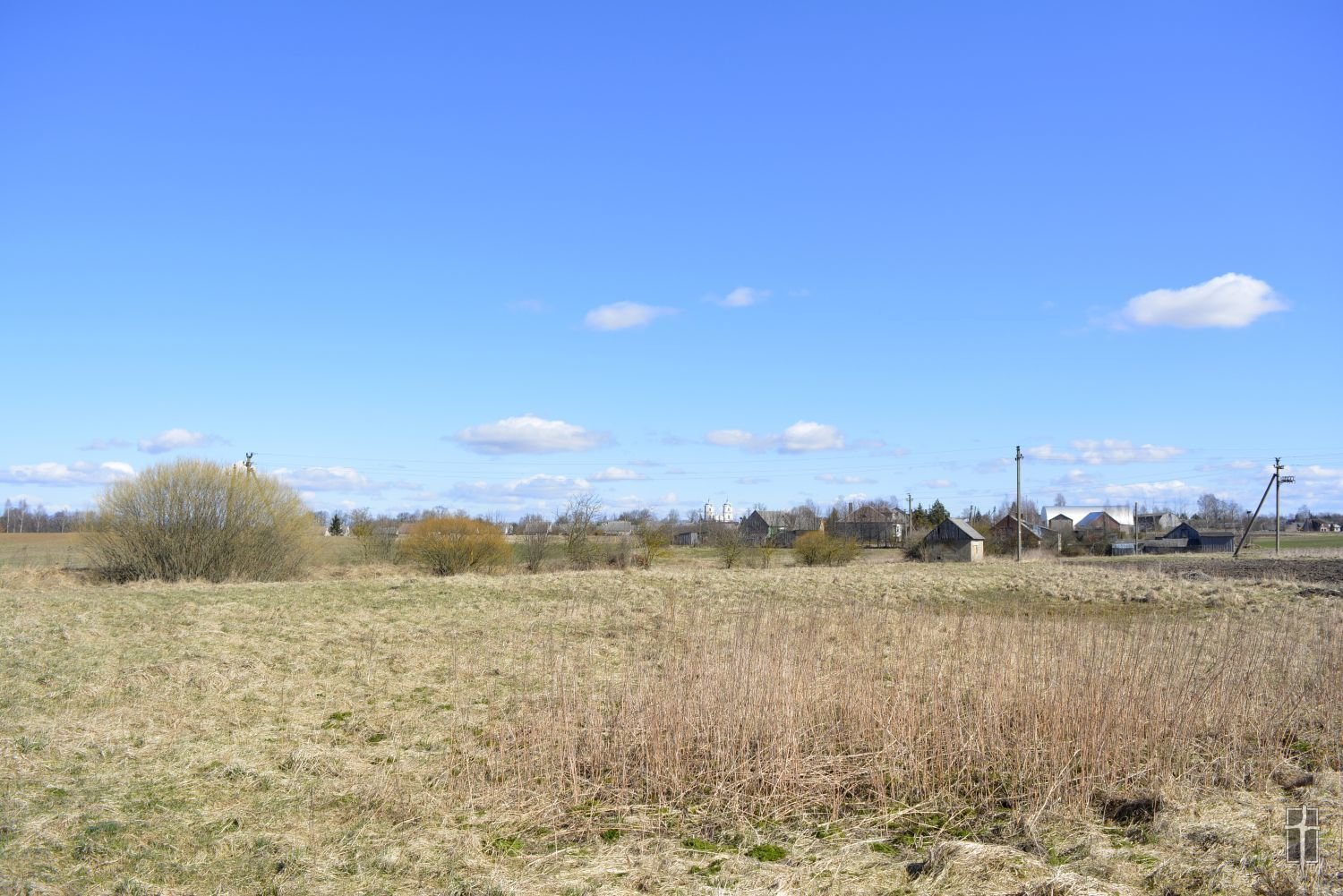
The territory of the former prisoner-of war-camp. In the distance – The Kudirkos Naumiestis Church of the Discovery of the Holy Cross. 2017. MGV
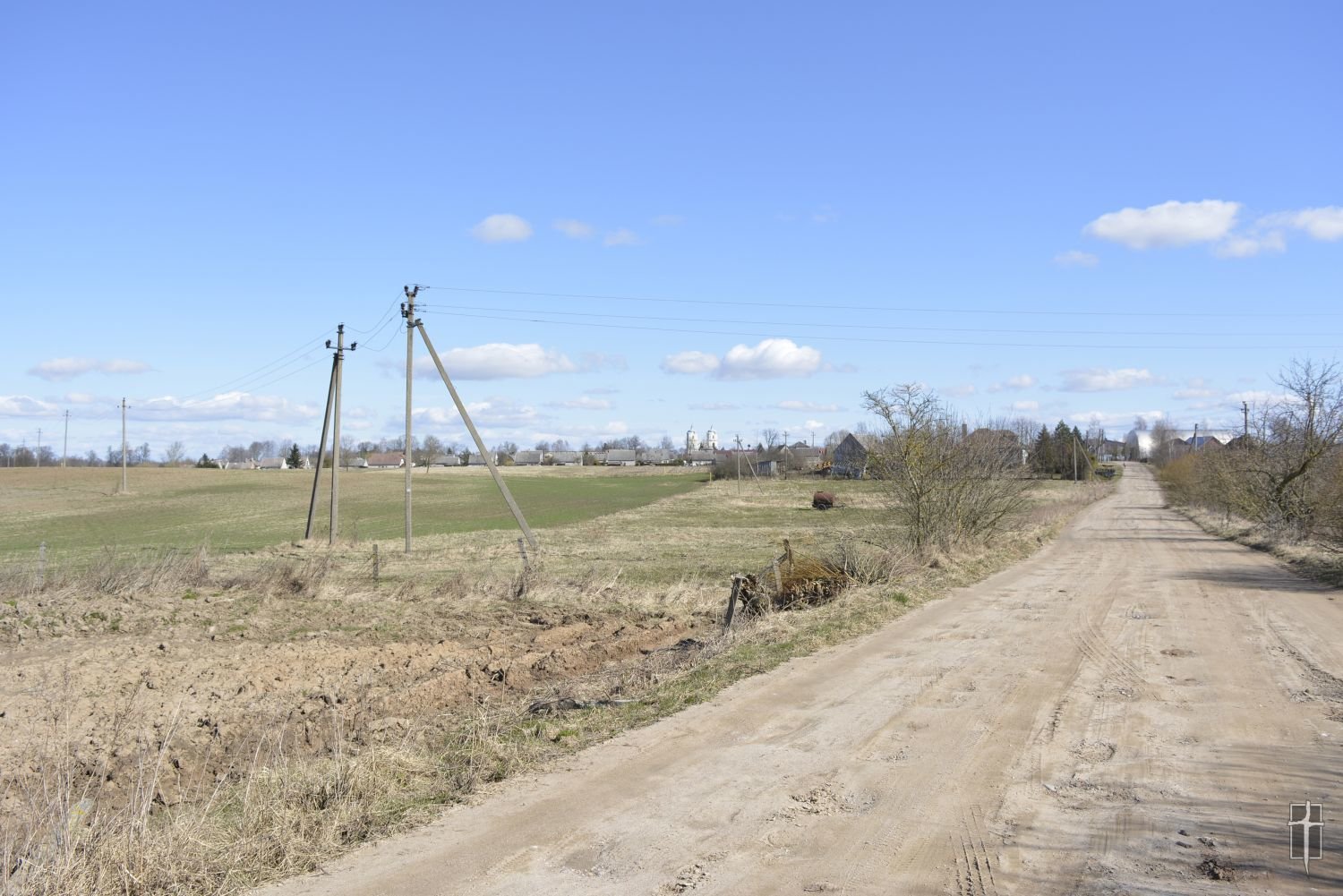
The territory of the former prison camp. 2017. MGV

1941: Construction of the building that had been occupied by the guard post. ŠKM
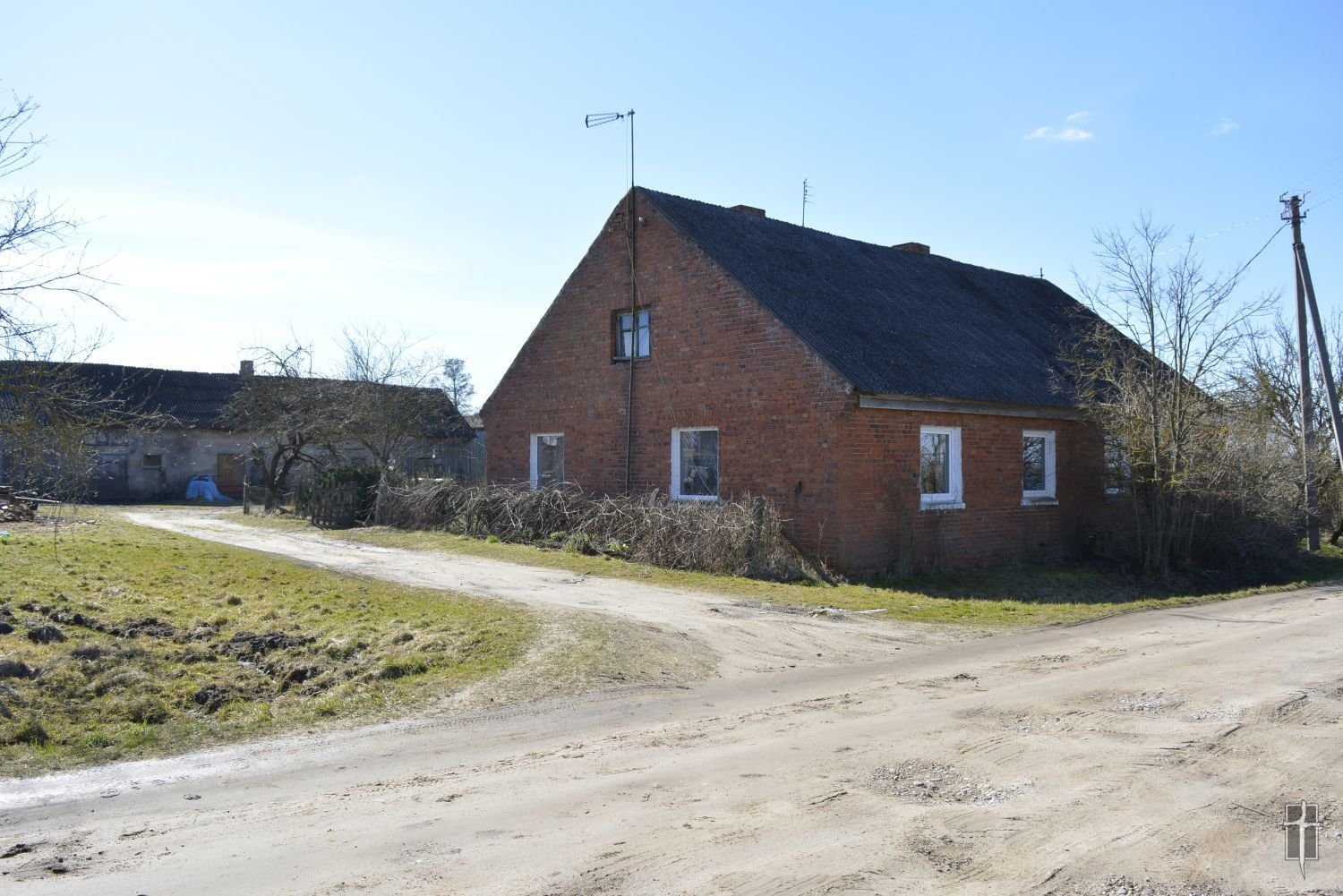
The same building in 2017. MGV
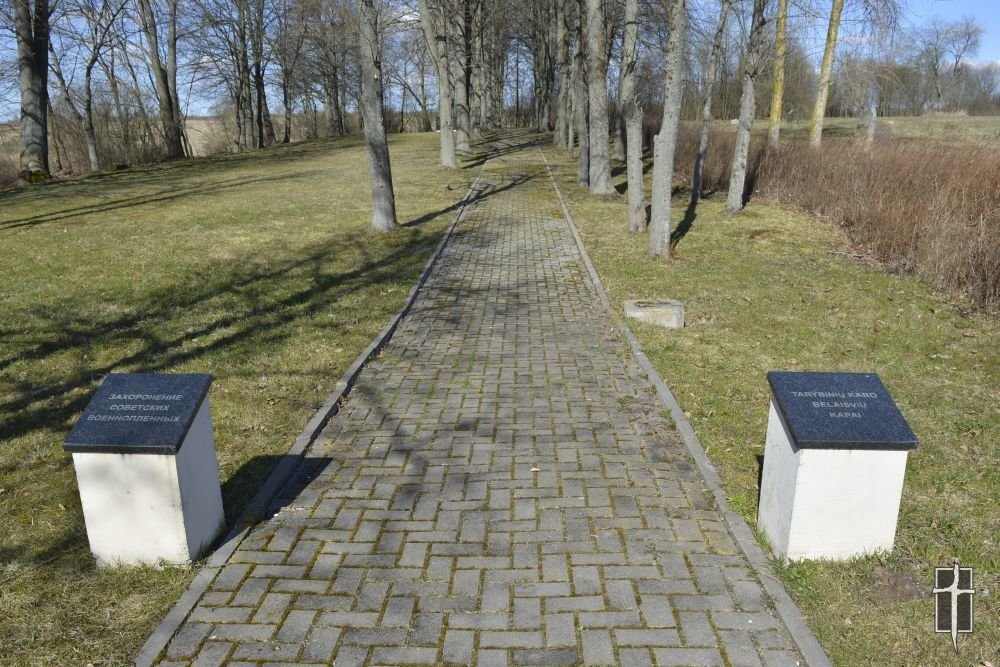
Mass burial grounds of prisoners of war in the old cemetery of Jews in Kudirkos Naumiestis. 2017. MGV
At present, the location of mass burial grounds in the old cemetery of Jews in Kudirkos Naumiestis has been landscaped and maintained, and a monument in memory of those who died erected.
The photographs supplied courtesy of:
The Museum of Genocide Victims – MGV
National Museum of Lithuania – NML
Širvintos kampelis museum – MŠK
Romas Treideris personal set of photos – RTPSP
Please send your comments and further information available via muziejus@genocid.lt
The Exhibition has been prepared by dr. Arūnas Bubnys, Eugenijus Peikštenis, Viktoras Avgulis and Aistė Tarabildienė, the employees with the Genocide and Resistance Research Centre of Lithuania.

We would like to express our gratitude to dr. Arūnė Arbušauskaitė, Saulius Girčius and Romas Treideris for collaboration in the process of preparing the Exhibition.
(text version is available on www.genocid.lt)